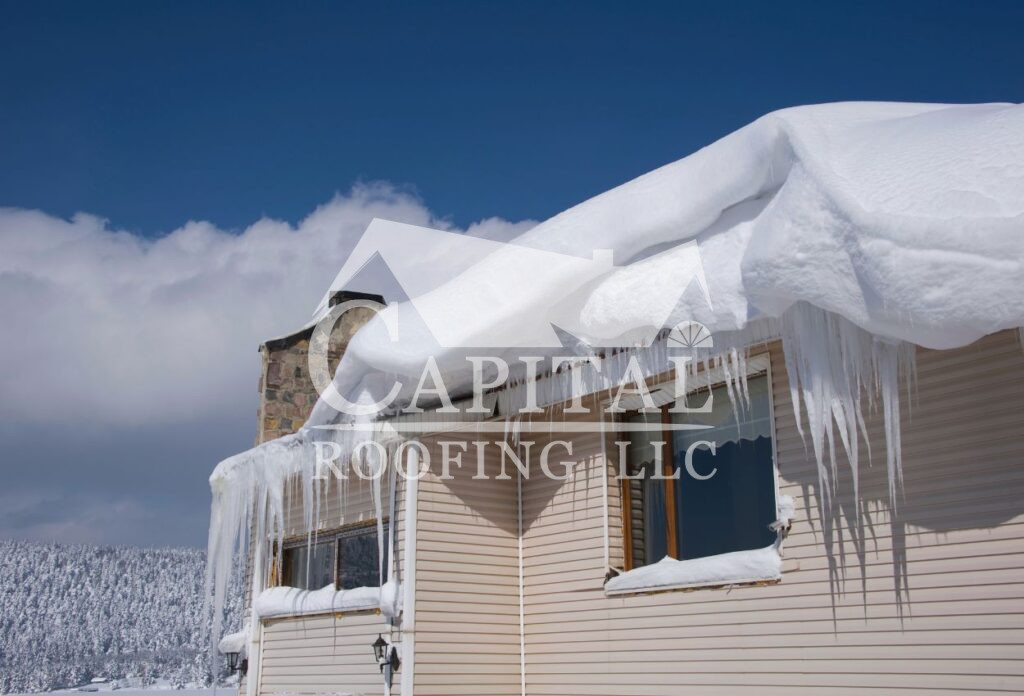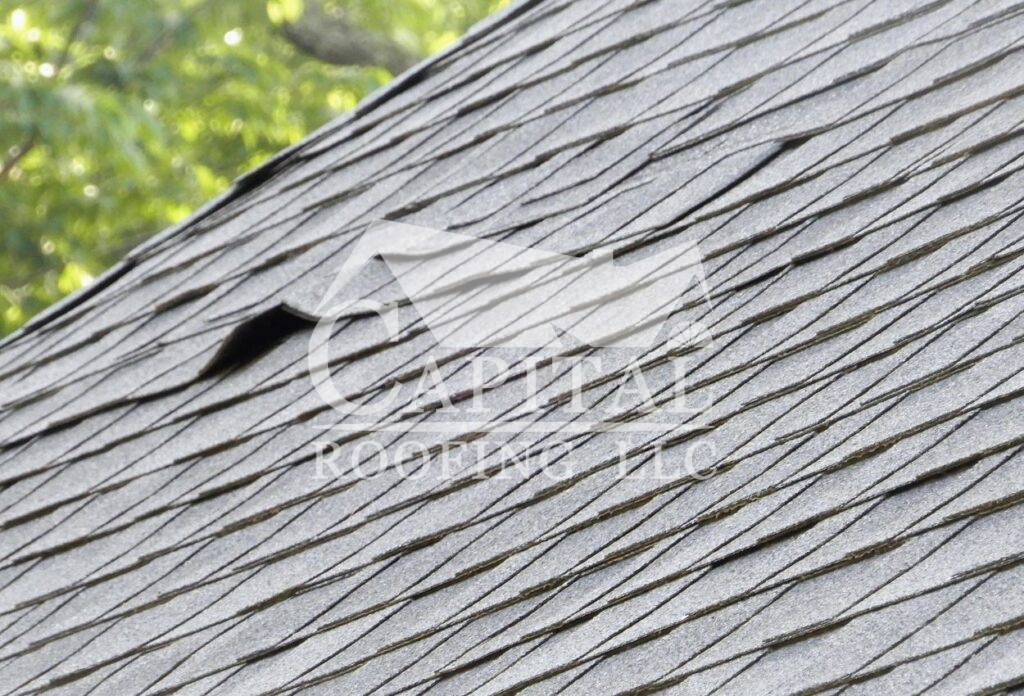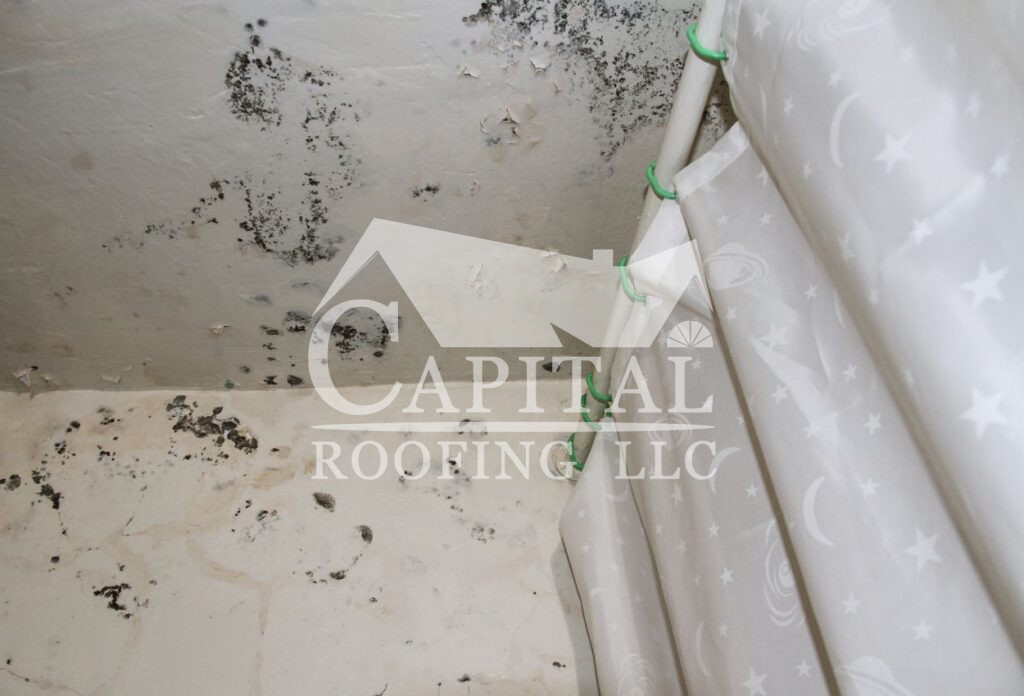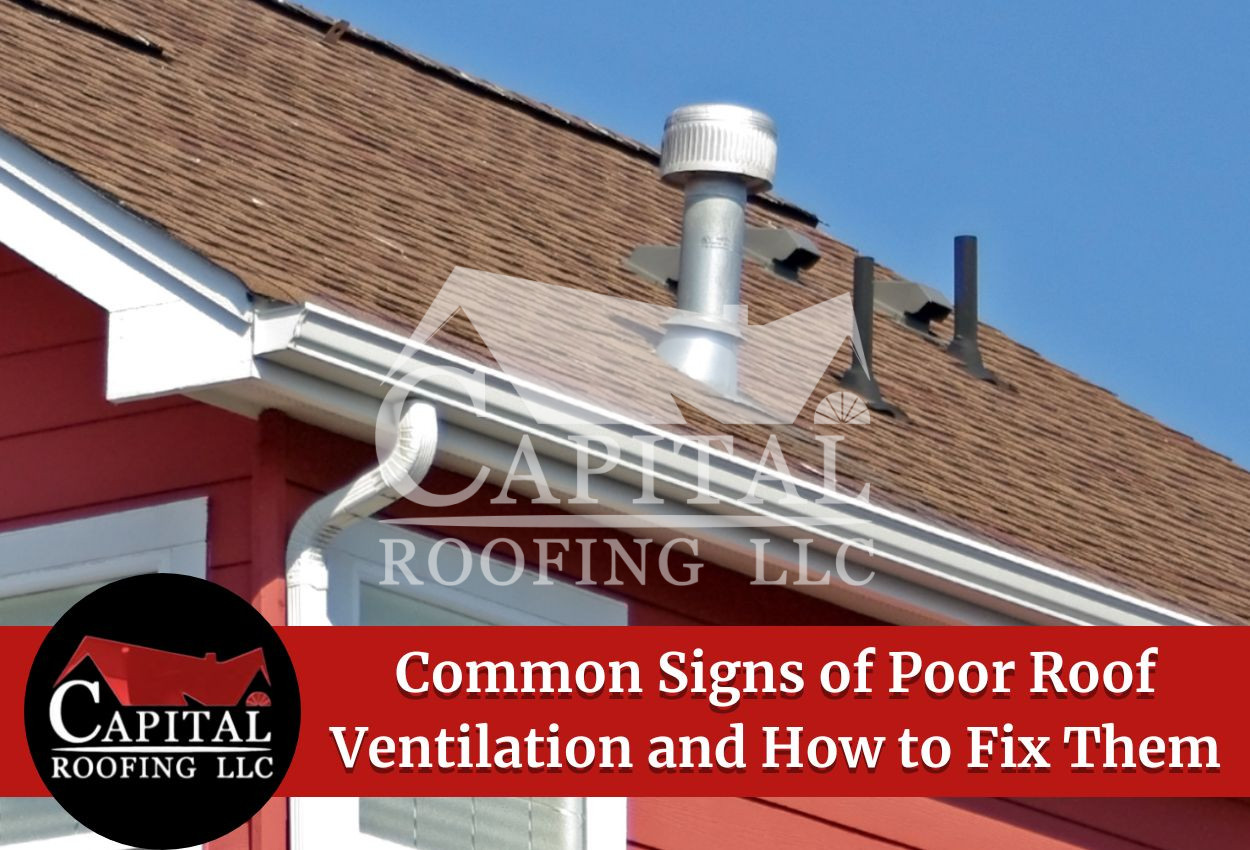As a homeowner, you may already know the consequences of improper roof ventilation and why it is an important thing to notice. At Capital Roofing, we are your local roofing professionals in Claremore, OK.
In today’s article, we will share some common signs that indicate poor roof ventilation in your home. If you notice these signs, it’s time to call your local roofing professionals for assistance.
Signs of Poor Roof Ventilation to Know
Roof vents are installed to regulate temperatures and moisture in your attic, preventing issues like mold growth and condensation. The following signs indicate a problem with your roof ventilation system.
#1 Uncomfortably Hot Upstairs Rooms
One of the most noticeable signs of poor attic ventilation is when the upstairs rooms in your home become unbearably hot, especially during the summer months. In Oklahoma, where we have hot and humid summers, sufficient ventilation is very important.
Without proper attic air flow, hot air gets trapped in your attic space. This heat then radiates downward into your living spaces, making the upper floors of your home uncomfortably warm.
You may also notice that these rooms don’t cool down until after sunset, and your air conditioning system runs constantly but still struggles to maintain a comfortable temperature.
This insufficient ventilation not only affects your comfort but also leads to significantly higher energy bills as your AC works overtime.
#2 Ice Dam Formation in Winter

While we can only see snow in some parts of our state, ice damming is another very serious concern in winter that mostly points toward poor roof ventilation. Ice dams form when warm air from your attic melts the snow on your roof, which then refreezes at the colder edges. These ice dams prevent proper drainage, allowing water to back up under your shingles.
The continuous cycle of melting and freezing happens because your attic doesn’t have enough air circulation to maintain a consistent roof temperature.
You may also notice icicles hanging along your gutter lines or water stains on your interior ceilings and walls. These are clear indicators that water is finding its way into your home due to ice dams.
Proper attic air flow is essential to prevent this cycle by keeping your roof at a consistent temperature. With improved attic ventilation, you can reduce the risk of ice dams and the water damage they cause to your home’s structure.
#3 Sagging Roof and Discolored Decking

One of the most alarming signs of poor attic ventilation is visible sagging in your roof or discoloration of your roof decking. When moisture from condensation builds up in your attic because of insufficient ventilation, it can compromise the wooden structures that support your roof.
The excess moisture causes the roof decking to absorb water, which weakens the wood and gives your roof a wavy appearance. Over time, a moisture-damaged roof deck may start to pop nails and droop under the weight of your roofing materials. If you look at the underside of your roof decking from inside your attic, you might see dark discoloration, which indicates moisture damage. This is a serious issue that requires professional attention and might mean you need significant repairs or even a complete roof replacement.
#4 Mold and Mildew Growth

The presence of mold and mildew in your attic is a clear indication of poor roof ventilation. When air doesn’t flow properly through your attic, humidity levels rise. This creates a perfect environment for mold and mildew growth.
This moisture problem not only damages your home but can also affect your family’s health. You should check your insulation, the underside of the roof deck, and other components in the attic for signs of mold growth.
Also, you may notice a musty or earthy smell in upstairs rooms or when your air conditioning system is running. This odor comes from the mold growth in your attic space. Along with mold, you might also see rusting on metal components in your attic, such as nails, fasteners, or HVAC ducts.
This corrosion happens because of the excess moisture in the air. Improving your attic air circulation is essential to reduce humidity levels and prevent these issues. If you already have mold growth, you’ll need professional remediation along with ventilation improvements.
#5 Pest and Termite Infestation
Poor roof ventilation creates an environment that’s also attractive to pests, particularly termites. The excess moisture in a poorly ventilated attic makes wood softer and more appealing to these destructive insects. A termite infestation in your attic is often a clear sign that you have a ventilation problem.
Besides termites, other pests like insects and rodents can find their way into your attic more easily if there are cracks or problems with your vents. Once they have an access point, these pests can establish themselves in your attic or elsewhere in your home. You might notice droppings, chewed materials or even hear movement in your attic. Any damaged vents that might be providing entry points for pests should be repaired or replaced immediately.
#6 Deteriorating Asphalt Shingles
Another sign of poor attic ventilation is visible damage to your roof shingles. Without proper airflow in attic spaces, the excessive heat trapped during the summer months can literally bake your roof from underneath. This intense heat causes the adhesives in the roof decking to deteriorate and weaken the wood structure.
You might even notice entire sections of shingles becoming loose because the adhesives have deteriorated and the nails have rusted or become damaged.
These visible signs of shingle damage are often most noticeable on the southern or western sides of your roof, where sun exposure is greatest. Once your shingles reach this point of damage, replacement is generally necessary.
Along with replacing the damaged shingles, it’s also important to address the underlying ventilation issues to prevent the same problems from recurring with your new roofing materials.
#7 Increased Energy Bills
If you’ve noticed a significant increase in your energy bills, specifically during extreme weather conditions, insufficient ventilation in your attic might be the cause. Poor attic ventilation forces your heating and cooling systems to work harder than necessary, consuming more energy and raising your utility costs.
During summer, the trapped heat in your attic radiates downward, making your air conditioning system run longer and more frequently to maintain comfortable temperatures. In winter, moisture buildup can also reduce the actual effectiveness of your insulation, causing your heating system to work overtime.
Many homeowners don’t realize that their high energy bills are related to their roof’s ventilation until a professional points it out. By improving your attic’s air circulation, you can create a more energy-efficient home with more consistent indoor temperatures and lower utility bills. The investment in proper ventilation often pays for itself through energy savings over time.
How to Improve Your Attic Ventilation
If you’ve recognized any of these signs in your home, it’s important to take care of any ventilation issues. First, evaluate your current system. In general, a balanced approach to attic ventilation, with intake vents at the eaves or soffits and exhaust vents near the roof peak, is recommended for homes. The question of how many roof vents a house should have depends on your attic’s size and the pitch of your roof.
The general rule is that you need 1 square foot of ventilation for every 300 square feet of attic space, with half being intake and half being exhaust ventilation. However, each home is unique, and a professional assessment will help determine the right solution for your specific situation.
Can You Have Too Much Attic Ventilation?
While rare, over-ventilation can sometimes be an issue, particularly if the system is unbalanced. This is why it’s important to consult with roofing professionals who understand the science behind proper ventilation.
For homeowners dealing with a poorly insulated attic along with ventilation problems, a comprehensive approach that addresses both issues will provide the best results for your home’s efficiency and roof’s longevity.
Get Professional Roofing Services In Oklahoma Today!
If you’ve noticed any signs of moisture in your attic or other indications of poor ventilation in your house, don’t wait until serious damage occurs. At Capital Roofing, we specialize in identifying and solving ventilation problems for Oklahoma homeowners.
Our team of experienced professionals can check your current roofing system, recommend improvements, and implement solutions that will protect your home and increase your comfort. Contact us today at (918) 260-4075 to schedule a free roof inspection and take the first step toward a properly ventilated, energy-efficient home.

